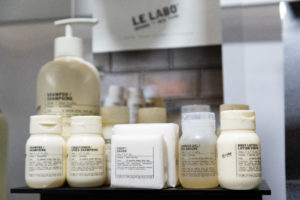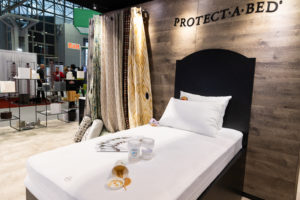 LOS ANGELES – A national survey commissioned by the American Hotel & Lodging Association (AHLA) and conducted by Morning Consult shows that improved sanitation protocols at U.S. hotels would indeed impact guests’ comfort levels. According to an AHLA press release, the top three precautions cited were: face coverings for employees; suspending daily housekeeping of rooms; and using technology to reduce direct contact. These priorities align with AHLA’s Safe Stay Guest Checklist and CDC recommendations distributed on behalf of the industry.
LOS ANGELES – A national survey commissioned by the American Hotel & Lodging Association (AHLA) and conducted by Morning Consult shows that improved sanitation protocols at U.S. hotels would indeed impact guests’ comfort levels. According to an AHLA press release, the top three precautions cited were: face coverings for employees; suspending daily housekeeping of rooms; and using technology to reduce direct contact. These priorities align with AHLA’s Safe Stay Guest Checklist and CDC recommendations distributed on behalf of the industry.
Other popular measures to increase guest confidence include: adding transparent barriers at front desks, concierge or valet stations; signage for washing hands; distancing and PPE; temporarily closing amenities; and floor markings to promote social distancing. The overwhelming majority of respondents indicate that these protocols would impact their comfort level, with eight out of ten frequent travelers saying they would feel comfortable staying in a hotel that has implemented the enhanced protocols called for in AHLA’s Safe Stay initiative.
“Like other initiatives, some hotel owners take them very seriously, while others do not have as much of a stringent set of standard operating procedures,” says Glenn Haussman, president of Rouse Media and host of the No Vacancy podcast. “Unfortunately, this is an industry-wide problem that all franchise companies must deal with.”
 From the beginning of the global pandemic, officials at Protect-A-Bed, Wheeling, Ill., honed in on ways to help properties show guests that it’s safe to resume traveling. “We’ve been busy working to understand the virus and how our products can help,” says Nicole Pasik, director of Marketing. “Our product development team has been exploring new fabrics and new applications for our existing technology. We’ve had our encasements, mattress protectors, and pillow protectors independently lab tested to ensure they meet the CDC standard for viral barriers.”
From the beginning of the global pandemic, officials at Protect-A-Bed, Wheeling, Ill., honed in on ways to help properties show guests that it’s safe to resume traveling. “We’ve been busy working to understand the virus and how our products can help,” says Nicole Pasik, director of Marketing. “Our product development team has been exploring new fabrics and new applications for our existing technology. We’ve had our encasements, mattress protectors, and pillow protectors independently lab tested to ensure they meet the CDC standard for viral barriers.”
By getting these third party certifications, Pasic contends that, “We can guarantee to hoteliers that they’re giving their guests a safe sleep zone.” To make this a reality, Protect-A-Bed team members are getting out and visiting properties. Pasic calls it an “exercise in patience, but also an opportunity to try some new methods of reaching our customers.”
Reaching guests and restoring confidence may include various related efforts, such as reducing in-room allergens. Michael Stephenson (pictured), president of the Wellness Hospitality Association Int’l (WHAI), began pondering the allergy problem long before the global pandemic. These days, he’s convinced there are crossover concerns.
 Officials at Los Angeles-based WHAI are approaching these concerns by proposing two tiers of hypoallergenic rooms. “A baseline reduced-allergen room level would protect guests against dust mites,” Stephenson explains. “About 20% of the population in developed countries are now allergic to dust mites. A hotel would cover all pillow and mattresses with specially woven encasements that prevent dust mites from entering the bedding. These baseline hypoallergenic rooms have an operating cost of just four cents a day.”
Officials at Los Angeles-based WHAI are approaching these concerns by proposing two tiers of hypoallergenic rooms. “A baseline reduced-allergen room level would protect guests against dust mites,” Stephenson explains. “About 20% of the population in developed countries are now allergic to dust mites. A hotel would cover all pillow and mattresses with specially woven encasements that prevent dust mites from entering the bedding. These baseline hypoallergenic rooms have an operating cost of just four cents a day.”
The second tier of hypoallergenic guest rooms would include a shower filter that removes chlorine (added to the water by cities as a disinfectant) and a HEPA air purifier that eliminates microscopic particulates—including airborne viruses. “Together, these three products remove about 95% of room allergens that trigger allergies in guests,” Stephenson says. “This second-tier of hypoallergenic rooms has an operating cost of less than $1.00 a day.”
With a mission to make hypoallergenic guest rooms as common as smoke-free rooms, The WHAI provides room allergen education and staff training on how to outfit, maintain, and upsell hypoallergenic rooms. “We’ve also developed the AllerWell® Hotel Program that provides the certified allergen-reducing products and training for hotels to quickly implement an allergy-friendly room program,” Stephenson adds.
